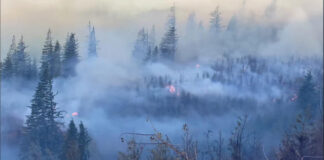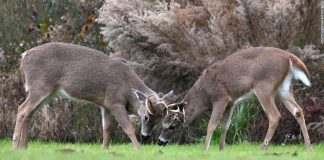MAY 27, 2022

A stock photo shows a cheetah looking off-camera. Researchers have identified extinct cheetah fossils in the Grand Canyon. – LuCaAr/Getty
Snow leopard-like cheetahs roamed America tens of thousands of years ago, hunting mountain goats across tricky terrain, according to fossilized remains.
The big cat, called the American cheetah (Miracinonyx trumani), has long been extinct. But a study has shed new light on the animals after cave fossils were found along the Grand Canyon that were previously thought to be pumas (Puma concolor).
In the new study, researchers state that they carried out a review of the fossils and they now argue that the designation of a Rancholabrean puma—that is, pumas from between about 250,000 years ago to 12,000 years ago—at the Grand Canyon is incorrect.
“We contend that there is no late Pleistocene record of P. concolor for the Grand Canyon,” the study reads. Rather, the fossils may have belonged to the American cheetah.
As part of their work, the researchers analyzed three different caves previously thought to house puma fossils—Next Door Cave, Rampart Cave and Stanton’s Cave.
Within Rampart Cave in particular, where fossils were dated to between 19,000 and 24,000 years ago, the researchers discovered the remains of two individual cheetahs. One, a juvenile, died of causes that were difficult to work out. But the other, a sub-adult, could have died due to a violent clash with another animal of the same species.
This possibility is based on the fact that the fossils show puncture marks on the skull, lower jaw, and along the vertebral column that were most likely made by another cheetah, according to the researchers.
“Violent attacks for intraspecific competition are not uncommon in large felids and are well documented in Puma concolor of the North American southwest,” the study reads.
“The Grand Canyon fossils show that this felid was adapted to dry uplands and rocky canyons. To survive in these kinds of conditions M. trumani must have been able to traverse the steep canyon slopes to hunt fleet footed canyon-adapted ungulates and other canyon prey. The modern felids most closely fitting this kind of present-day ecology are the snow leopard (Uncia uncia) and the Asiatic Cheetah (Acinonyx jubatus venaticus).”
The study was published in the New Mexico Museum of Natural History and Science Bulletin this month.
The American cheetah is described as closely related to the modern cougar, according to the U.S. National Park Service (NPS), with adaptations for swift running.
It is suggested that the American cheetah was once the main predator of the pronghorn antelope, which might be why the pronghorn antelope of today can run much faster than it needs to to escape modern predators.
Modern cheetahs are known for their speed and can accelerate from 0-60 miles per hour in less than three seconds according to Britannica.
Courtesy/Source: Newsweek

































































































